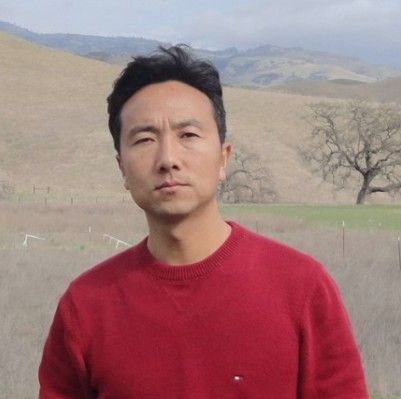陳寶明,男,博士,中山大學生命科學學院副教授、博士生導師。
基本介紹
- 中文名:陳寶明
- 畢業院校:蘭州大學
- 學位/學歷:博士
- 專業方向:生態學
- 任職院校:中山大學
研究方向
個人經歷
講授課程
學術成就
承擔課題
- 國家自然科學基金面上項目,31670479,晝夜不對稱增溫背景下入侵植物改變土壤氮轉化的氨氧化微生物機制及其反饋作用,2017/01-2020/12,63萬元,主持
- 廣東省自然科學基金自由申請項目,2017A030313187,外來入侵植物的根系覓養特性與入侵機制研究,2017/5-2020/5,10萬元,主持
- 廣東省自然科學基金自由申請項目,2016A030313287,氣溫日較差變化與增溫對外來植物入侵力的影響機制,2016/6-2019/6,10萬元,主持
- 廣東省自然科學基金自由申請項目,S2013010012346,外來入侵植物對氨氧化微生物的影響作用與機制,2013/10-2015/10,5萬元,已結題,主持
- 國家自然科學基金面上項目,31070481,外來植物入侵改變系統氮素循環的化感驅動新機制研究,2011/01-2013/12,35萬元,已結題,主持
- 國家自然科學基金重點項目,31030015,不同植物功能群對外來植物入侵的抵抗力形成機制研究,2011/01-2014/12,190萬元,已結題,參加(第一參加人)
- 中國博士後基金項目,2005038491,廣東外來植物薇甘菊的入侵對本地植物枯落物降解及養分釋放的影響,2005/08-2007/07,1萬元,已結題,主持
論文專著
- Chen WB, Chen BM*. 2018. Considering the preferences for nitrogen forms by invasive plants: a case study from a hydroponic culture experiment. Weed Research, Doi: 10.1111/wre.12344.
- Chen BM*,D’Antonio CM, Molinari N, Peng SL*. 2018. Mechanisms of influence of invasive grass litter on germination and growth of coexisting species in California. Biological Invasions, 20:1881-1897
- Chen BM*, Su JQ, Liao HX, Peng SL*. 2018. A greater foraging scale, not a higher foraging precision, may facilitate invasion by exotic plants in nutrient heterogeneous conditions. Annals of Botany, 121:561-569
- Chen BM*, Peng SL. 2018. Allelopathic potential of native invasive plants: The evidence from southern China. Allelopathy Journal, 43(1): 43-52
- Chen BM, Gao Y, Liao HX, Peng SL*. 2017. Differential responses of invasive and native plants to warming with simulated changes in diurnal temperature ranges. AoB PLANTS, 9:plx028
- Chen BM*, Liao HX, Chen WB, Wei HJ, Peng SL*. 2017. Role of allelopathy in plant invasion and control of invasive plants. Allelopathy Journal, 41 (2): 155-166
- Chen BM, Li S, Liao HX, Peng SL*. 2017. Do forest soil microbes have the potential to resist plant invasion? A case study in Dinghushan Biosphere Reserve (South China). Acta Oecologica, 81:1-9
- Liu JG, Liao HX, Chen BM, Peng SL*. 2017. Do phenolic acids in forest soil resist the exotic plant invasion? Allelopathy Journal, 41 (2):167-176
- Liao HX, D'Antonio CM, Chen BM, Huang QQ, Peng SL*. 2016. How much do phenotypic plasticity and local genetic variation contribute to phenotypic divergences along environmental gradients in widespread invasive plants? A meta-analysis. Oikos, 125:905-917 (Editor’s choice)
- Chang XY, Chen BM*, Liu G, Zhou T, Jia XR, Peng SL*. 2015. Effects of climate change on plant population growth rate and community composition change. PLoS ONE, 10(6): 0126228
- Huang FF, Peng SL*, Chen BM, Liao HX, Huang QQ, Lin ZG, Liu G. 2015. Rapid evolution of dispersal-related traits during range expansion of an invasive vine Mikania micrantha H.B.K. Oikos, 124: 1023–1030
- Hou QQ, Chen BM (Co-first author), Peng SL*, Chen LY. 2014. Effects of extreme temperature on seedling establishment of nonnative invasive plants. Biological Invasions, 16: 2049-2061
- Chen BM, Peng SL*, D’Antonio CM, Ren WT, Li DJ. 2013. Non-additive effects on decomposition from mixing litter of the invasive Mikania micrantha H.B.K. with native plants. PLoS ONE, e66289
- Li DJ, Peng SL*, Chen BM. 2013. The effects of leaf litter evenness on decomposition depend on which plant functional group is dominant. Plant and Soil, 365:255-266
- Wu J, Peng SL*, Zhao HB, Tang MH, Li FR, Chen BM. 2011. Selection of species resistant to the wood rot fungus Phellinus noxius. European Journal of Plant Pathology, 130:463-467
- Wang RL, Zeng RS, Peng SL*, Chen BM, Liang XT, Xin XW. 2011. Elevated temperature may accelerate invasive expansion of the liana plant Ipomoea cairica. Weed Research,51:574-580
- Shen XY, Peng SL*, Chen BM, Pang JX, Chen LY, Xu HM, Hou YP. 2011. Do higher resource capture ability and utilization efficiency facilitate the successful invasion of native plants? Biological Invasions, 13:869-881
- Hou YP, Peng SL*, Chen BM, Ni G-Y. 2011. Inhibition of an invasive plant (Mikania micrantha H.B.K.) by soils of three different forests in lower subtropical China. Biological Invasions, 13:381-391
- Peng SL*, Hou YP, Chen BM. 2010. Establishment of Markov successional model and its application for forest restoration reference in Southern China. Ecological Modelling, 221:1317-1324
- Li FR, Peng SL*, Chen BM, Hou YP. 2010. A meta-analysis of the responses of woody and herbaceous plants to elevated ultraviolet-B radiation. Acta Oecologica, 36:1-9
- Song LY, Wu JR, Li CH, Li FR, Peng SL*, Chen BM. 2009. Different responses of invasive and native species to elevated CO2 concentration. Acta Oecologica, 35:128-135
- Peng SL*, Hou YP, Chen BM. 2009. Vegetation Restoration and Its Effects on Carbon Balance in Guangdong Province, China. Restoration Ecology, 17:487-494
- Chen BM, Wang GX, Peng SL*. 2009. Role of desert annuals in nutrient flow in arid area of Northwestern China: a nutrient reservoir and provider. Plant Ecology, 201:401-409
- Chen BM, Peng SL*, Ni GY. 2009. Effects of the invasive plant Mikania micrantha H.B.K. on soil nitrogen availability through allelopathy in South China. Biological Invasions, 11:1291-1299
- Chen BM, Peng, S.L., Chen L.Y., Li F.R., Wang G.X. 2009. Effects of aqueous extracts of Mikania micrantha H.B.K. on nutrients release from the forests litter at three succession stages in south China. Allelopathy Journal, 23(2):453-460
- Chen BM, Wang GX, Cheng DL, Deng JM, Peng SL*, An FB. 2007. Vegetation Change and Soil Nutrient Distribution along an Oasis-Desert Transitional Zone in Northwestern China. Journal of Integrative Plant Biology, 49:1537-1547
- Chen BM, Ni GY, Ren WT, Peng SL*. 2007. Effects of aqueous extracts of Mikania micrantha on litter decomposition of native plants in South China. Allelopathy Journal, 20:307-314
- Deng JM, Wang GX*, Morris EC, Wei XP, Li DX, Chen BM, ZHAO CM, Liu J, Wang Y. 2006. Plant mass–density relationship along a moisture gradient in north west China. Journal of Ecology, 94:953-958
- Chen BM, Wang ZH, Li SX, Wang GX*, Song HX, Wang XN. 2004. Effects of nitrate supply on plant growth, nitrate accumulation, metabolic nitrate concentration and nitrate reductase activity in three leafy vegetables. Plant Science, 167:635-643
- 張北壯,蒙子寧,陳寶明,黃立南,李金天.《生態學實驗教程》. 廣州:中山大學出版社,2015年1月(30萬字;195頁;978-7-306-05145-5)
- 彭少麟、陳寶明、趙瓊等譯. 《彈性思維:不斷變化的世界中社會-生態系統的可持續性》,(美)沃克(Walker B.),(美)索爾克(Salt D.)著;北京:高等教育出版社,2010年1月

